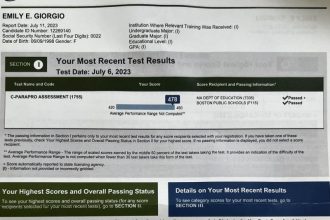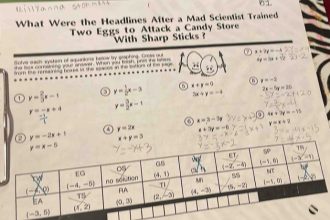“16 bars in rap? It’s not just a mere numerical count; it’s the heartbeat of the lyrical landscape. In simple terms, a standard verse in rap typically consists of 16 lines, each line being a “bar.” These bars serve as the foundation upon which rappers lay down their thoughts, stories, and emotions, creating a powerful rhythmic structure that can captivate listeners within seconds. Let’s dive deeper into the essence of 16 bars in rap and uncover the artistry behind this fundamental unit of expression.”
Exploring the Concept of 16 Bars in Rap
Welcome to our deep dive into the world of rap music! Today, we’re going to unravel the mystery behind the term ’16 bars’ that you often hear in rap songs. So, what exactly is 16 bars in rap? Let’s break it down step by step.
Understanding the Basics of Rap Music
Before we delve into the specifics of 16 bars, let’s quickly review what rap music is. Rap is a genre of music that incorporates rhythmic and rhyming speech. It is often performed over a backing beat or musical accompaniment. Rappers, also known as MCs (short for Master of Ceremonies), use their lyrical skills to convey stories, emotions, and messages to their audience.
What Does ’16 Bars’ Mean?
In the context of rap music, a ‘bar’ refers to a single line of lyrics within a verse. A typical rap verse consists of multiple bars, with each bar containing a specific number of beats. When we talk about ’16 bars,’ we are referring to a verse that consists of 16 lines or segments of lyrics.
Imagine each bar as a building block in a rap song. Just like stacking blocks on top of each other to create a structure, rappers string together bars to construct their verses. The length of a rap verse can vary, but the term ’16 bars’ has become a standard measurement in the rap industry.
Breaking Down the Structure of 16 Bars
Now that we know what 16 bars represent, let’s take a closer look at how they are structured. In most cases, each bar in a rap verse contains four beats. This rhythmic pattern helps guide the flow and delivery of the lyrics. So, a 16-bar verse would typically consist of 64 beats in total (4 beats per bar x 16 bars).
Rappers use the structure of 16 bars to organize their thoughts and ideas into coherent verses. It provides a framework for them to develop their storytelling, wordplay, and rhymes. By following this structure, rappers can maintain consistency and flow throughout their performances.
Why Are 16 Bars Important in Rap Music?
So, why do rappers adhere to the concept of 16 bars? One reason is that it offers a balanced and concise format for delivering their message. The limited number of bars challenges rappers to make every line count and avoid unnecessary filler. This constraint encourages creativity and precision in their writing.
Additionally, the 16-bar structure plays a crucial role in collaborations and freestyle sessions among rappers. When artists take turns sharing verses, having a standard length like 16 bars ensures smooth transitions between performers. It creates a sense of unity and coherence in the overall performance.
Examples of 16 Bars in Popular Rap Songs
To better understand how 16 bars are applied in real rap songs, let’s look at a few examples from popular artists. In Eminem’s track “Lose Yourself,” the iconic verse that begins with “His palms are sweaty, knees weak, arms are heavy” is a perfect illustration of a 16-bar structure.
Another classic example is Jay-Z’s verse in “Empire State of Mind,” where he raps, “Yeah, I’m out that Brooklyn, now I’m down in Tribeca / Right next to De Niro, but I’ll be hood forever.” This verse showcases how 16 bars can be used to convey a vivid story or personal narrative within a song.
In conclusion, the concept of 16 bars in rap serves as a fundamental building block for creating engaging and impactful verses. By adhering to this standardized structure, rappers can craft their lyrics with precision and flair. Whether you’re a seasoned rap enthusiast or just starting to explore the genre, understanding the significance of 16 bars can deepen your appreciation for the artistry and craftsmanship behind rap music.
Next time you listen to your favorite rap song, pay attention to the structure of the verses and see if you can identify the 16-bar pattern. Who knows, you might discover a newfound appreciation for the sheer talent and skill that goes into crafting those intricate rhymes and flows!
How To Count and Write 16 Bars in Rap
Frequently Asked Questions
What does “16 bars” mean in rap music?
In the context of rap music, “16 bars” refers to a verse or section of a song that consists of 16 lines. Each line typically contains a set number of syllables, and this structure helps artists maintain a consistent flow and rhythm in their performance.
How long is a typical 16 bars in a rap song?
While the exact length can vary depending on the tempo and speed of the song, a typical 16 bars in a rap song usually lasts around 30-45 seconds when performed. This timeframe allows artists to express their thoughts, storytelling, or emotions within a structured framework.
Why is the concept of “16 bars” important in rap music?
The concept of “16 bars” is crucial in rap music as it provides a standardized framework for artists to structure their verses. This consistency enables rappers to maintain flow, create memorable performances, and collaborate with other artists seamlessly, as they know how many bars each verse should contain.
Final Thoughts
In conclusion, 16 bars in rap refer to a standard verse length in the genre, typically consisting of 4 lines with 4 beats each. This structure allows for rhythm, flow, and storytelling within a concise framework. Understanding the concept of 16 bars in rap is crucial for aspiring artists to craft their verses effectively. Mastering this format enables rappers to showcase their lyrical prowess and creativity in a compelling manner.






